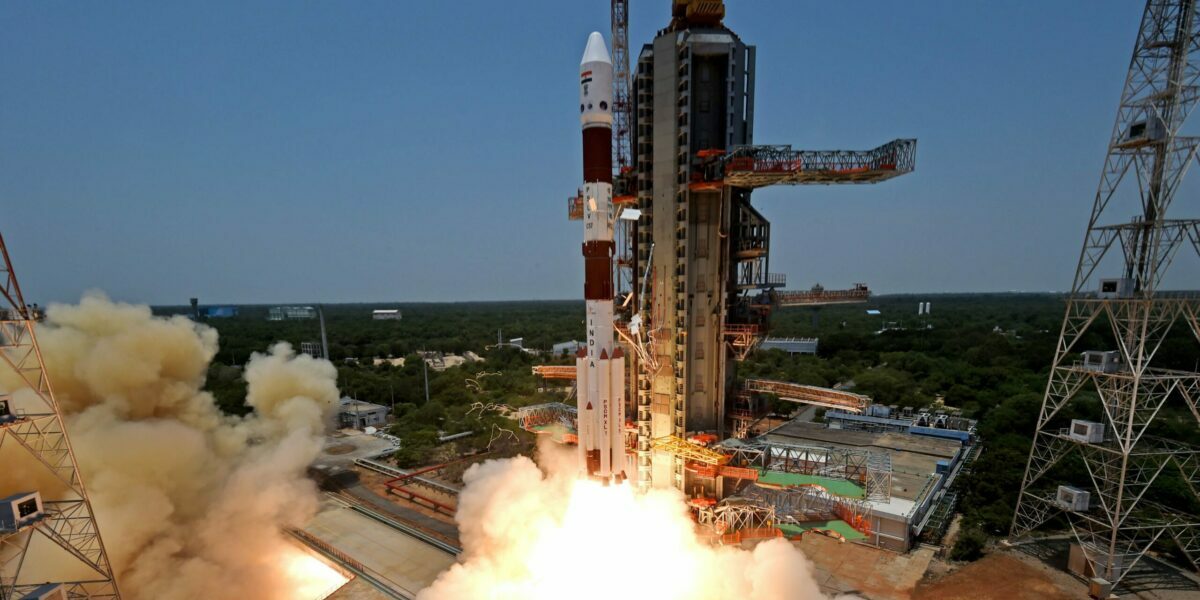Aditya-L1—first Indian satellite mission to study the Sun, will travel to its new home, the first Lagrange point (L1) of the Sun-Earth system.
Published Sep 02, 2023 | 4:02 PM ⚊ Updated Sep 02, 2023 | 4:02 PM

Aditya L1 was launched on 2 September from Satish Dhawan Space Centre at Sriharikota in Andhra Pradesh. (ISRO/X)
With the highly-anticipated Aditya-L1 solar mission taking flight on Saturday, 2 September, the European Space Agency (ESA) is lending a crucial hand in two significant ways: by offering deep space communication services, and aiding ISRO in validating critical new flight dynamics software.
Communication is an essential part of every space mission. Without ground station support, it is impossible to get any science data from a spacecraft, to know how it is doing, to know if it is safe, or even to know where it is, ESA said.
“ESA’s global network of deep space tracking stations and use of internationally recognised technical standards allows us to help our partners track, command, and receive data from their spacecraft almost anywhere in the solar system,” said Ramesh Chellathurai, ESA Service Manager and ESA Cross-Support Liaison Officer for ISRO.
“For the Aditya-L1 mission, we are providing support from all three of our 35-metre deep space antennas in Australia, Spain, and Argentina, as well as support from our Kourou station in French Guiana and coordinated support from goon hilly Earth Station in the UK,” Chellathurai said in a statement.
ESA said it is also the main provider of ground station services for Aditya-L1. ESA stations are supporting the mission from beginning to end, the space agency said.
The support ranges from the critical Launch and Early Orbit Phase, throughout the journey to L1, to sending commands to and receiving science data from Aditya-L1 for multiple hours per day over the next two years of routine operations, it said.
India turns to the Sun 🇮🇳 🛰️☀️@isro‘s #Aditya-L1 solar observatory is due to launch on Saturday, 2 September, at 08:20 CEST.
It’s the first Indian satellite mission to study the #Sun, and @esa is providing two important types of support: https://t.co/5ibbaPjaQT
🧵👇 pic.twitter.com/gpYAtbvrge— ESA Operations (@esaoperations) August 31, 2023
ISRO on Saturday launched the country’s ambitious Solar mission, Aditya L1 eyeing history again after its successful lunar expedition, Chandrayaan 3 on 23 August.
The spacecraft, after travelling about 1.5 million km from the Earth over 125 days, is expected to be placed in a Halo orbit around the Lagrangian point L1, which is considered closest to the Sun.
Aditya-L1 will be the first Indian satellite mission to study the Sun. The spacecraft will travel to its new home, the first Lagrange point (L1) of the Sun-Earth system.
From there, its seven instruments will be used to investigate open questions about our dynamic and turbulent star.
Four of them will view the Sun directly, while the other three will carry out in-situ measurements to explore the nature of the space weather that the Sun generates in interplanetary space.
PSLV-C57/Aditya-L1 Mission:
The launch of Aditya-L1 by PSLV-C57 is accomplished successfully.
The vehicle has placed the satellite precisely into its intended orbit.
India’s first solar observatory has begun its journey to the destination of Sun-Earth L1 point.
— ISRO (@isro) September 2, 2023
When one large mass orbits another, its gravitational forces and orbital motion interact to create five equilibrium points where a spacecraft can operate for a prolonged period of time without having to use a lot of fuel. These locations are known as Lagrange points.
The first Lagrange point, L1, is located between Earth and the Sun, roughly one per cent of the distance to the Sun. It is a great location for solar explorers such as Aditya-L1, as it allows for an unobstructed view of the Sun that is never eclipsed by Earth.
At L1, Aditya-L1 will join spacecraft such as the ESA/NASA Solar Heliospheric Observatory (SOHO), which has been at L1 since 1996.
(Disclaimer: The headline, subheads, and intro of this report along with the photos may have been reworked by South First. The rest of the content is from a syndicated feed, and has been edited for style.)
